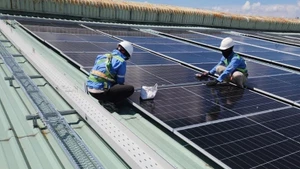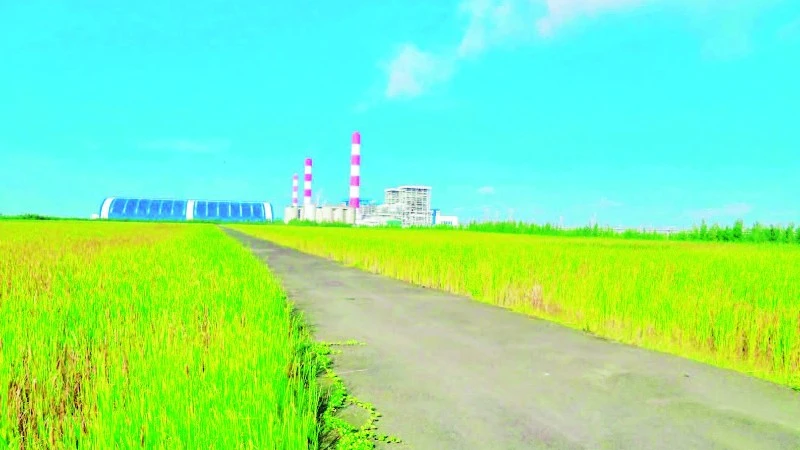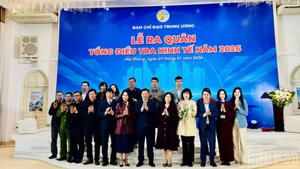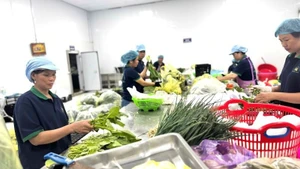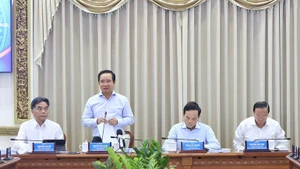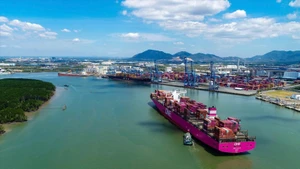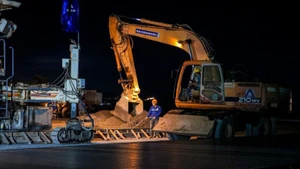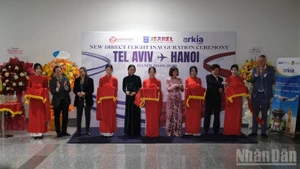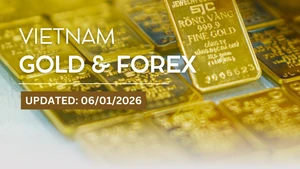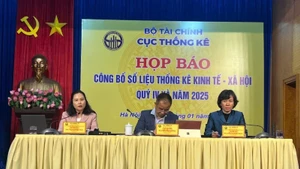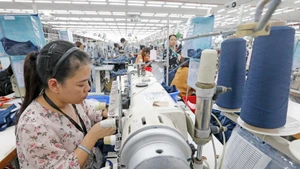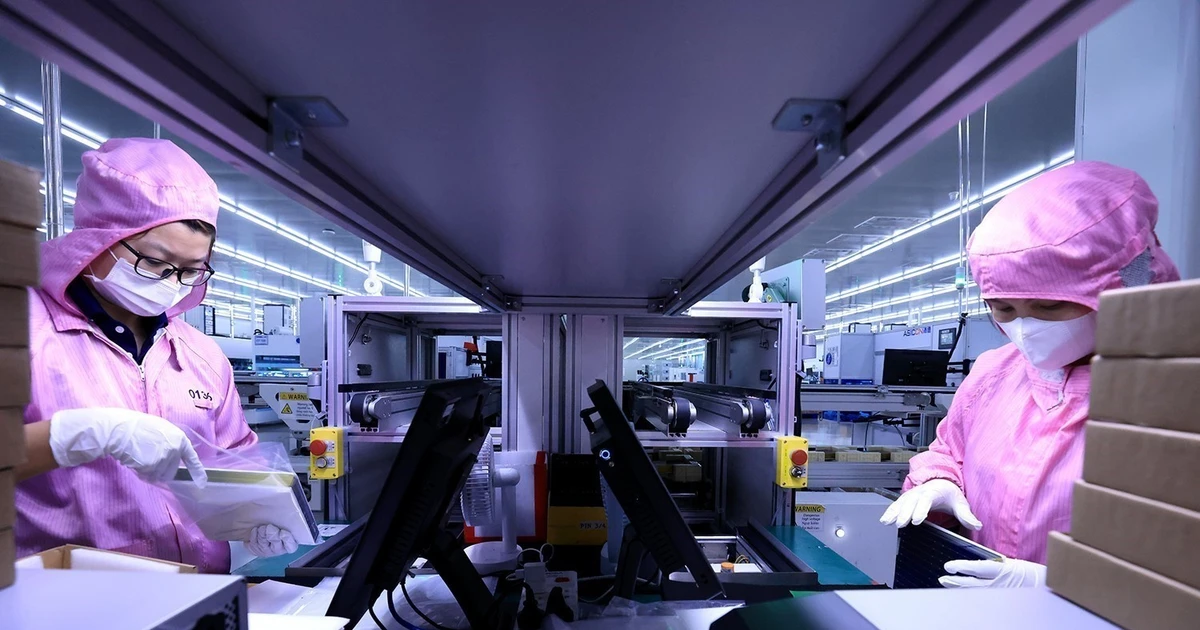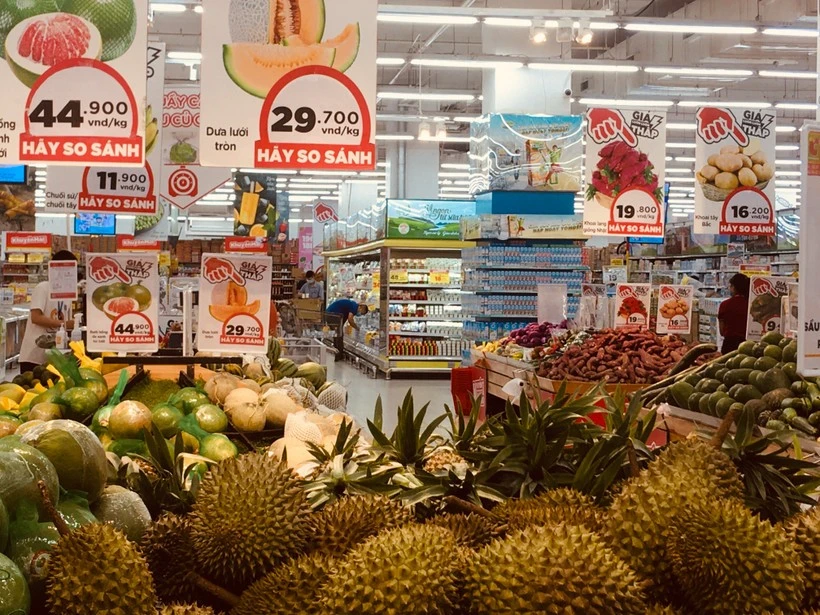According to data from the Foreign Investment Agency (Ministry of Planning and Investment), the total newly registered capital, adjusted capital and capital contributions and share purchases of foreign investors, reached more than 20 billion USD in the first nine months of 2023, up 7.7% over the same period last year. Notably, new investment capital and capital contributions and share purchases have continued to advance.
A destination for investors
In the past nine months, 2,254 new projects were granted investment certificates with a total registered capital of over 10.23 billion USD, an increase of 66.3% in the number of projects and 43.6% in registered capital. Foreign investors also carried out 2,539 transactions of capital contributions and share purchases at Vietnamese businesses, with a total capital contribution value of over 4.82 billion USD, down 5.9% in the number of transactions but up 47% in the value of capital contribution.
The adjusted capital of foreign investors decreased sharply by 37.3% in the nine-month period, but the level tended to reduce compared to previous months. Meanwhile, the number of projects with capital expansion rose over the same period last year, affirming investors’ confidence in Vietnam’s investment environment.
According to the Foreign Investment Agency, the FDI results are attributed to the drastic solutions of the Government and the Prime Minister, in supporting and removing difficulties for businesses to boost investment disbursement.
Phi Thi Huong Nga, director of the Department of Industrial and Construction Statistics (Ministry of Planning and Investment), said the number of new projects surged by 66.3% while the total newly registered capital soared by 43.6%, showing interest of more small and medium-sized foreign investors in Vietnam.
On the contrary, large corporations are currently being cautious and carefully considering large investments in Vietnam, in the context of the global minimum tax policy, to take effect in 2024. New investment projects still focus on provinces and cities that have many advantages in attracting FDI such as Hanoi, Ho Chi Minh City, Bac Giang, Binh Duong, Hai Phong, Bac Ninh, and Dong Nai. These localities have good infrastructure, stable human resources, efforts to reform administrative procedures and activeness in investment promotion.
Results of FDI attraction in the first nine months of 2023 showed that a large proportion of foreign investors came from Asia and traditional markets. Total registered FDI from the six largest partners of Vietnam including Singapore, Japan, China, the Republic of Korea, Hong Kong (China), and Taiwan (China), accounted for 78.81% of Vietnam’s total registered FDI, particularly FDI from Singapore alone reached nearly 4 billion USD, in the first nine months of 2023.
Opportunity to receive high-quality capital flows
Economic experts optimistically believe that this is a turning point in Vietnam’s strategy to attract foreign capital, with significant changes in the quality of FDI. The biggest expectation is that Vietnam will have many chances to attract high-quality capital flows, thanks to its foreign policy with major partners, including the US.
Many forecasts show that the upgrade of Vietnam-US relations to a Comprehensive Strategic Partnership, during US President Joe Biden’s visit to Vietnam and investment opportunities after Prime Minister Pham Minh Chinh’s trip to the US, will change Vietnam’s FDI “map”.
The US had 1,286 valid investment projects in Vietnam with a total registered capital of 11.7 billion USD, by August 20, 2023, becoming the 11th largest investor out of 143 countries and territories currently investing in Vietnam. This number is still far from the investment potential between the two countries because American investors wish to become the leading investors in Vietnam, while Vietnam’s FDI attraction orientation is targeting high-tech projects and source technology, a field led by US businesses.
The prospect of attracting high-quality FDI capital became clearer when recently, the US Semiconductor Industry Association and many other US businesses came to Vietnam, to explore the investment environment as a location for shifting chip production. The semiconductor industry also became one of the important topics in meetings and exchanges between Prime Minister Pham Minh Chinh and large US corporations, during the PM’s business trip in September.
According to the Minister of Planning and Investment, Vietnam’s socio-economic development strategy in the 2021-2030 period, determined rapid and sustainable development based on science, technology, innovation, and digital transformation. To realise its policy, Vietnam identifies high-tech fields, especially the semiconductor industry, as one of the fields that create breakthroughs and opportunities for domestic businesses to participate more deeply in the global value chain. Vietnam currently has a lot of potential and chances to develop the semiconductor industry ecosystem, but there remain a lot of things to do to turn the opportunities into reality.
According to Vu Tu Thanh, Deputy Executive Director of the US-ASEAN Business Council, attracting US investors in the technology sector is a big challenge, because they set out very high requirements and specific conditions in this field. Furthermore, Vietnam lacks human resources, especially microchip engineers, and has limitations in infrastructure and clean energy supply. Therefore, Vietnam needs to prepare human resources to welcome the opportunity in this important industry.
The General Statistics Office recommends that the Government focus on perfecting investment institutions in support of investors and promulgating appropriate policies for each industry and field, to attract quality FDI inflows.
In addition, it is necessary to build a mechanism to prioritise high-tech enterprises and technology transfer to domestic enterprises. Domestic enterprises also need to make efforts to improve their capacity in technology, labour quality, and management, to meet the requirements of FDI enterprises. It is also essential to proactively monitor the trend of FDI movement into Vietnam, to make appropriate policy adjustments in attracting quality FDI flows.


